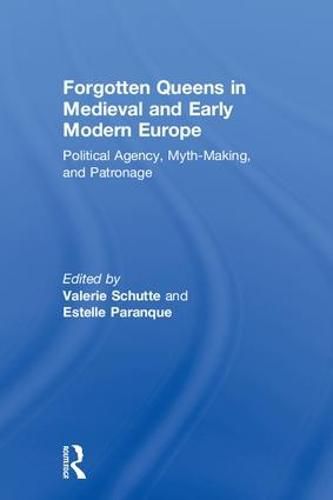Readings Newsletter
Become a Readings Member to make your shopping experience even easier.
Sign in or sign up for free!
You’re not far away from qualifying for FREE standard shipping within Australia
You’ve qualified for FREE standard shipping within Australia
The cart is loading…






Forgotten Queens in Medieval and Early Modern Europe examines queens dowager and queens consort who have disappeared from history or have been deeply misunderstood in modern historical treatment.
Divided into eleven chapters, this book covers queenship from 1016 to 1800, demonstrating the influence of queens in different aspects of monarchy over eight centuries and furthering our knowledge of the roles and challenges that they faced. It also promotes a deeper understanding of the methods of power and patronage for women who were not queens, many of which have since become mythologized into what historians have wanted them to be. The chronological organisation of the book, meanwhile, allows the reader to see more clearly how these forgotten queens are related by the power, agency, and patronage they displayed, despite the mythologization to which they have all been subjected.
Offering a broad geographical coverage and providing a comparison of queenship across a range of disciplines, such as religious history, art history, and literature, Forgotten Queens in Medieval and Early Modern Europe is ideal for students and scholars of pre-modern queenship and of medieval and early modern history courses more generally.
$9.00 standard shipping within Australia
FREE standard shipping within Australia for orders over $100.00
Express & International shipping calculated at checkout
Forgotten Queens in Medieval and Early Modern Europe examines queens dowager and queens consort who have disappeared from history or have been deeply misunderstood in modern historical treatment.
Divided into eleven chapters, this book covers queenship from 1016 to 1800, demonstrating the influence of queens in different aspects of monarchy over eight centuries and furthering our knowledge of the roles and challenges that they faced. It also promotes a deeper understanding of the methods of power and patronage for women who were not queens, many of which have since become mythologized into what historians have wanted them to be. The chronological organisation of the book, meanwhile, allows the reader to see more clearly how these forgotten queens are related by the power, agency, and patronage they displayed, despite the mythologization to which they have all been subjected.
Offering a broad geographical coverage and providing a comparison of queenship across a range of disciplines, such as religious history, art history, and literature, Forgotten Queens in Medieval and Early Modern Europe is ideal for students and scholars of pre-modern queenship and of medieval and early modern history courses more generally.